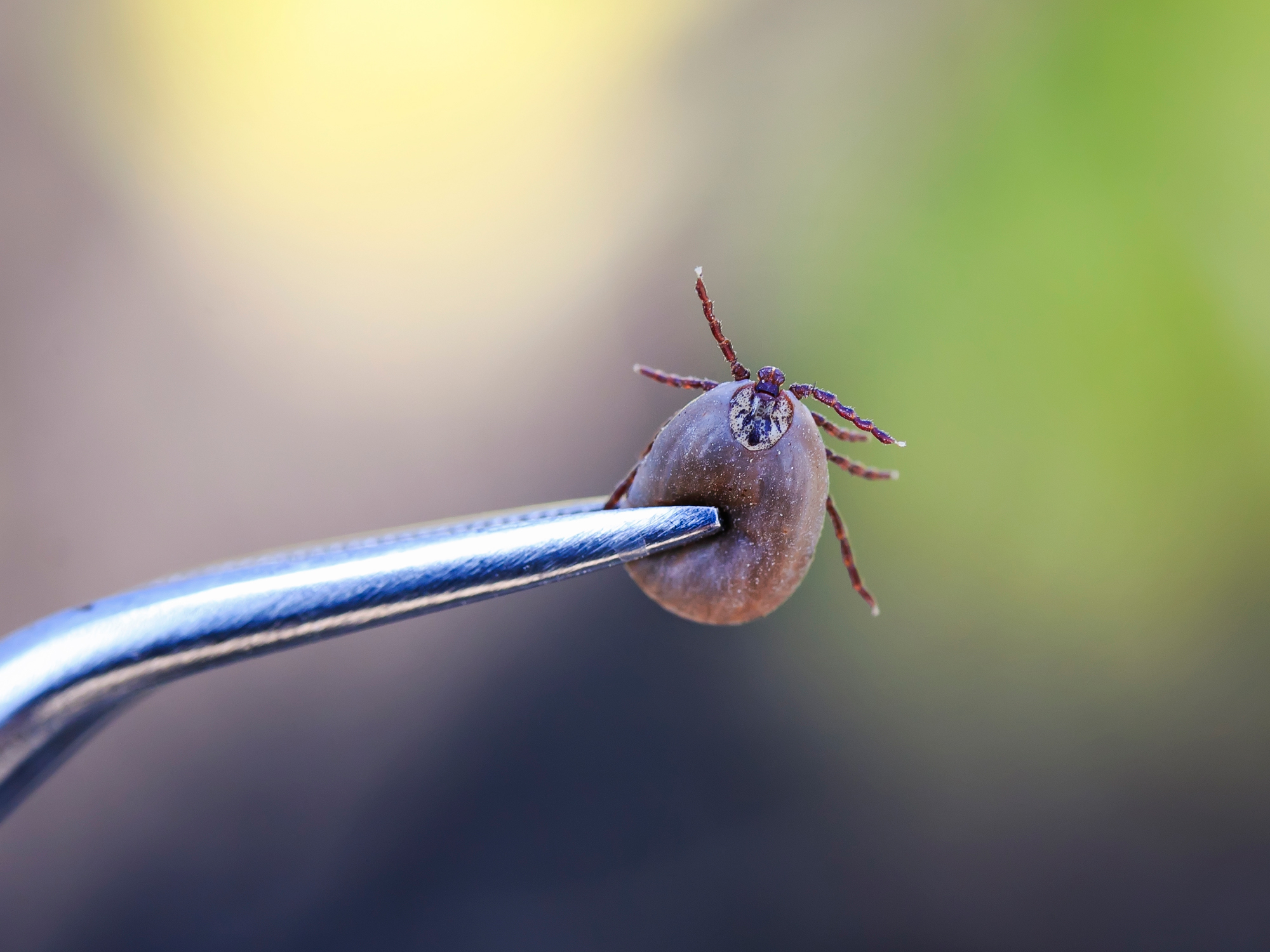Get Easy Health Digest™ in your inbox and don’t miss a thing when you subscribe today. Plus, get the free bonus report, Mother Nature’s Tips, Tricks and Remedies for Cholesterol, Blood Pressure & Blood Sugar as my way of saying welcome to the community!
Update on the newest deadly tick danger

Ticks suck… in every sense of the word.
First, they latch on to your body and literally suck your blood (which is gross enough on it’s own). Then they have the nerve to inject you with bacteria and viruses that can make you extremely ill, and in some cases cause death.
In the States, there are about a half dozen ticks that transmit disease. That means there are about half dozen ticks you need to avoid like the plague because they basically are one….
Their populations are exploding. They’re making people super sick. And — fun fact — some of them carry the bacteria that causes the actual plague.
So, what types of ticks do you need to watch out for?
All of them, unless you like creepy little bugs sucking your blood. But especially, the disease-carrying varieties, like the:
- American dog tick
- Black-legged tick (also know as the deer tick and the sucker that causes Lyme disease)
- Brown dog tick
- Gulf Coast tick
- Lone star tick
- Rocky Mountain wood tick
- Western black-legged tick
The newest tick on the block
In 2017, the U.S. Department of Agriculture (USDA) confirmed the presence of the Asian longhorned tick (Haemaphysalis longicornis). It probably arrived in the United States in or before 2010.
It may be the newest tick on the block, but it’s made itself at home.
This Asian tick has already a problem in Australia and New Zealand. It carries a virus that kills 15 percent of its victims.
A few years ago it popped up in Western New Jersey. And now it’s spread to many areas in the Eastern half of the U.S., from New York south to Georgia and west to Missouri, including Pennsylvania, Arkansas, North Carolina, Virginia and West Virginia.
Luckily, the Asian longhorned ticks that have turned up in America haven’t carried any human diseases… yet.
While there have been no reports in the United States yet, the longhorned tick is known to transmit the agents of certain livestock and human diseases in other countries including: anaplasmosis, babesiosis, ehrlichiosis, theileriosis and rickettsiosis, as well as several viruses.
So, while there’s no reason to let the Asian longhorned tick keep you up at night, do your best to avoid it (just like you do other ticks). It’s only a matter of time before these ticks make their way from animals to humans. And when they do, they may start carrying the deadly virus they carry in other parts of the world.
How to avoid all bloodsuckers
Here’s the good news…you avoid the Asian longhorned tick the same way you avoid all the other dangerous ticks. So, you don’t have to do anything different. Just:
- Stay away from tick-infested areas whenever possible. That includes grassy, brushy and woody areas.
- Wear clothing that covers your skin in tick-prone areas. That way, even if you come into contact with a tick, it won’t get a chance to sink it’s teeth into you. Make sure your clothing is light-colored too. You’re much more likely to spot a tick on a white shirt than a black one.
- Check yourself for ticks frequently… like whenever you spend time outdoors. Make a habit of checking your head and body for ticks as soon as you come inside. If you find and remove ticks soon enough, they won’t have a chance to pass along any diseases. Taking a shower immediately after outdoor time helps too.
- Try natural tick repellants. If you’re not into DEET-based products, you can make an effective natural tick repellant at home with vodka, witch hazel, water and a few essential oils (lemon eucalyptus, rose geranium and citronella). Here are more detailed instructions on how to make it. As a bonus, this repellant will keep those other disease-carrying blood suckers — mosquitos — away too.
Editor’s note: Regain your health and enjoy a full, vibrant life by defeating the real culprits of premature aging and sickness — excessive, damaging acid in your body! The truth is when you’re alkaline, wellness thrives and sickness takes a dive. Click here to discover The Alkaline Secret to Ultimate Vitality!
Sources:
- New tick species spreading in the US — MedicalXpress.
- An Invasive New Tick Is Spreading in the U.S. — The New York Times.
- Geographic distribution of ticks that bite humans — Centers for Disease Control and Prevention.
- Preventing Tick Bites — Centers for Disease Control and Prevention.













